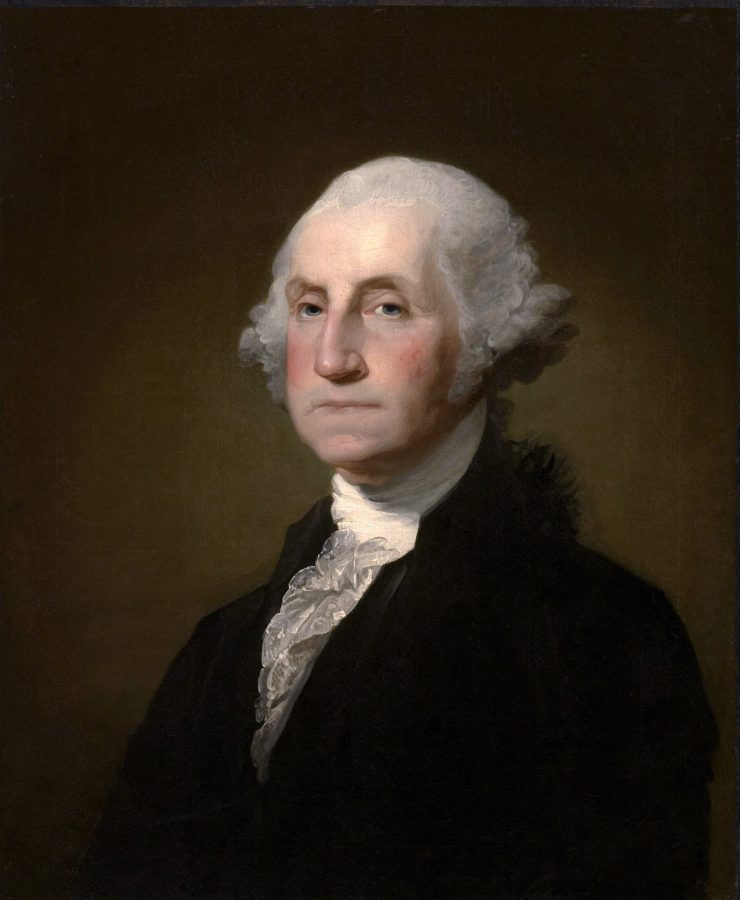This Day in History: December 14th
December 15, 2016
On December 14, 1799 George Washington died of acute laryngitis at the age of 67. From the French and Indian War to the seat in the Oval Office, Washington lead men. He was a pioneer in the republic government that America wanted. He was the one who came up with the blueprint as to how America should be run. Without General Washington’s military adroitness and President Washington’s diplomatic tact, America may have been a pipe dream.
Washington’s lesser known days were his part in the French and Indian War, also known as the Seven Years War. In fact, he was part of the event that lead to the beginning of this war. Washington, a member of the British Navy, was ordered to go to the Ohio River Valley to push the French off of the land. Alongside him was Seneca Chief Tanaghrisson, better known as the Half King, who was Washington’s trail guide. When they met a French battalion, Washington subdued them and arrested them, and it was at that time when the Half King decided to crash his tomahawk into the skull of the French commander Joseph Coulon de Jumonville.
When word reached Jumonville’s half-brother, Louis Coulon de Villiers, he was told that a young Virginian, in reference to Washington, had his brother killed. Villiers met Washington at Fort Necessity, which was essentially a dirt mound surrounded by wooden stakes, and also the site of Washington’s surrender. The French forced him to sign a treaty, that happened to be written in French, but no one except one man in Washington’s dwindled force claimed to know French. He did not, and told Washington to sign the treaty anyways, which stated that by signing it, Washington took responsibility for Jumonville’s death, essentially starting the war.
During the war, Washington fought alongside the famous General Edward “Bulldog” Braddock. They went to Fort Duquesne, a vital fort necessary to control the surrounding river routes. Braddock’s arrogance transformed into foolishness, as he attempted to fight a European war on American soil, which were two very different lands. This Battle of Fort Duquesne was also known as Braddock’s Massacre, as he was killed in the battle. This was a man who George Washington looked up to as a mentor, and while he appreciated Washington’s company, he treated the colonists he lead terribly. This helped open Washington’s eyes to the negative treatment from Britain towards colonists, both during and after the Seven Years War.
As Commander of the Continental Army, Washington had to convince his troops that this seemingly futile war was worth fighting for, especially after having to retreat from the Battle of New York. At the Battle of Trenton, Washington secretly besieged a Hessian fort. Hessians were essentially German mercenaries that the British hired to help them quell the American rebellion. Colonel John Rahl, the man in charge of this particular fort, was not aware of the Americans rallying outside. Due to this, Washington performed a surprise attack and managed to kill 30 Hessians and take 900 of them prisoner. The Americans faced two deaths, both due to the cold. These victories, including a victory at the Battle of Princeton, raised troop morale, gave the American troops a better understanding of how to fight the British, and showed the world that this rebellion was not just a dream, but a reality.
After forcing British General Charles Cornwallis to surrender at the Battle of Yorktown, Washington’s job was not done. He still had to deal with the British who refused to leave the land in the West, and many implored him to attend the Constitutional Convention. The purpose of the Constitutional Convention was to create a new document that would replace the Articles of Confederation. The Constitution was born, and Washington was ready to work.
His presidency started off with a unanimous vote from the Electoral College to make him president, being the only president to achieve this feat. While he did not associate himself with a specific party, he often deferred to the judgment of a famous Federalist, who was Washington’s Secretary of the Treasury, Alexander Hamilton. Hamilton, who often clashed with Secretary of State Thomas Jefferson, discouraged taking action in the French Revolution. Hamilton claimed that since King Louis XVI was beheaded, the pre-existing treaty with France was no longer valid. Washington agreed, and he kept America out of the French Revolution.
Hamilton also devised an economic plan of “Funding and Assumption,” meaning that he wanted America to have a national bank, which would have stabilized America’s credit and improved the economy overall. This idea was fought ruthlessly by Thomas Jefferson and James Madison, both part of the Democratic-Republican party, who thought that the bank sought to help investors and merchants at the expense of the rest of the population. To pay for this bank, he would install the Protective Tariff of 1789, an act that would also anger the South because it favored Northern commerce. Hamilton’s plan also included repaying war bonds to American citizens and assuming state debt, which would transform it to national debt. While Washington liked this idea, he knew that Hamilton could not pass the bill without Congressional approval. Therefore, Hamilton struck a deal with Thomas Jefferson and James Madison by offering them the capital of America, which was originally in New York City. This compromise would bring it down to the Potomac River, which would then be the spot for Washington D.C.
Washington went on to accomplish many things in both terms of his presidency, and on September 17, 1796, he had a newspaper publish his Farewell Address to the American people. He warned of permanent alliances with countries and instead proposed that temporary alliances were a much better choice, when necessary. He also stated that he did not want the country to have elections being fought against two main parties. Instead, he would want elections to involve many different candidates. In the election of 1796, the two main candidates were John Adams and Thomas Jefferson.
One thing about the American government that people were afraid of was the unpredictability of it. While some of the government ideals had been inspired from other civilizations, there was no set blueprint as to how one would run this nation. Washington was able to ease the worries of the American people by putting his country before his ideals, and that is what made him a great president. He was also the man that brought upon the tradition of taking two terms in office and ending their presidential career afterwards.
Washington retired to his plantation house Mount Vernon, and lived there for another couple of years until his death on December 14, 1799.


